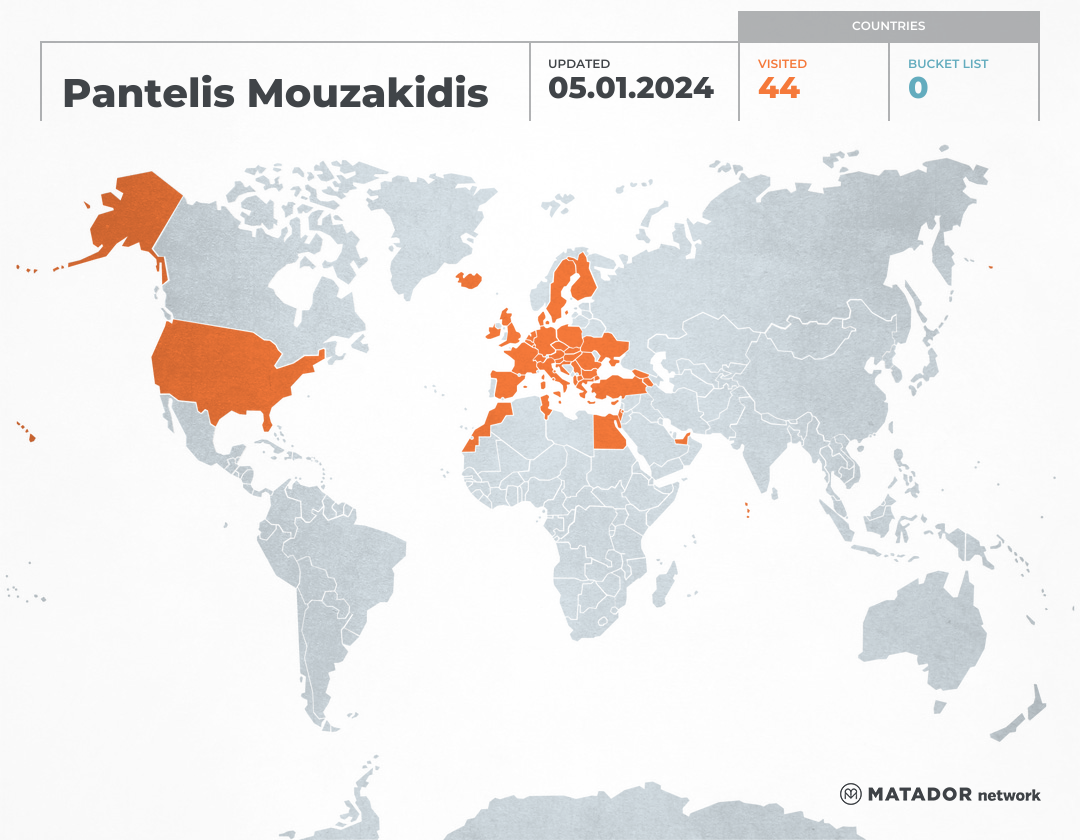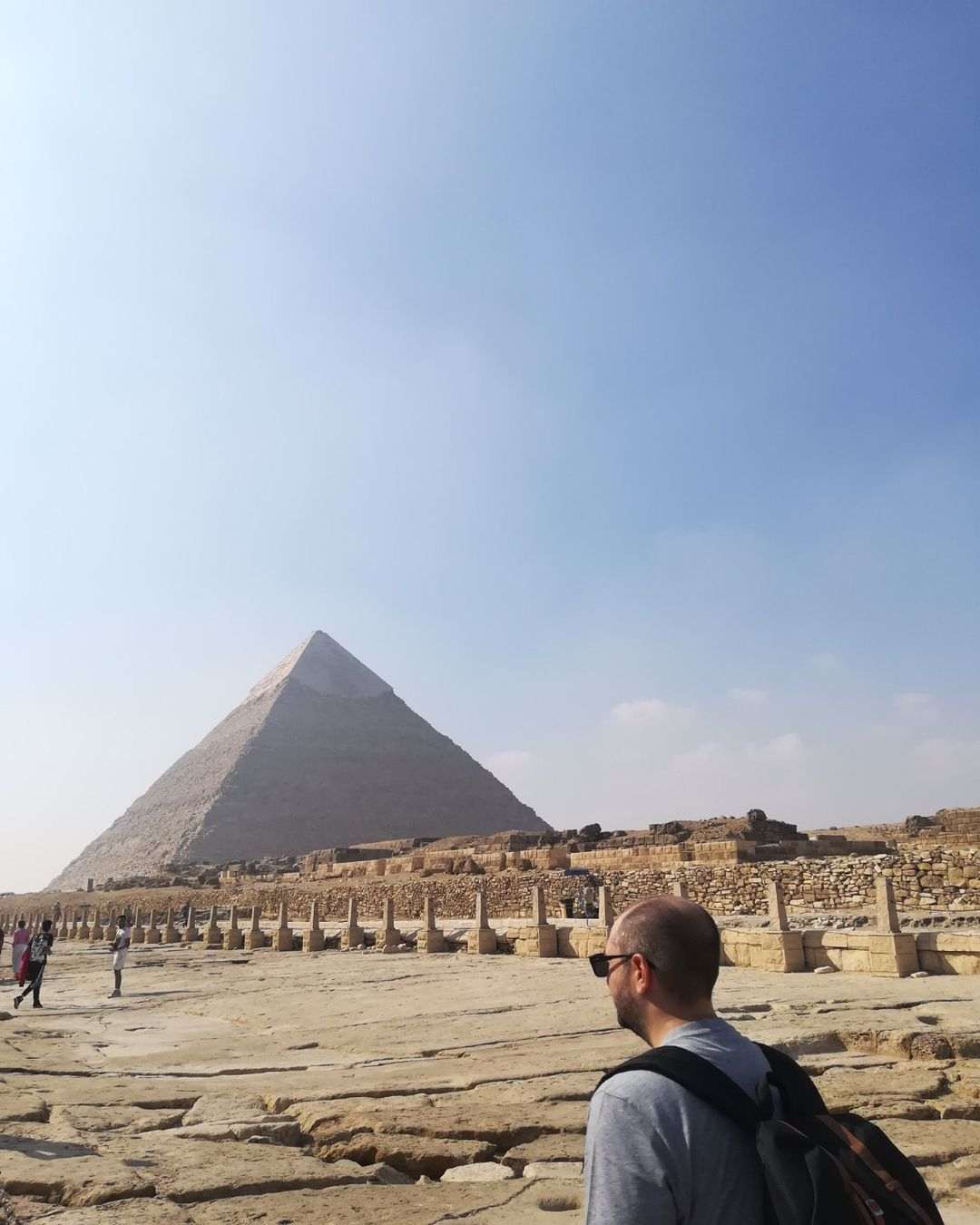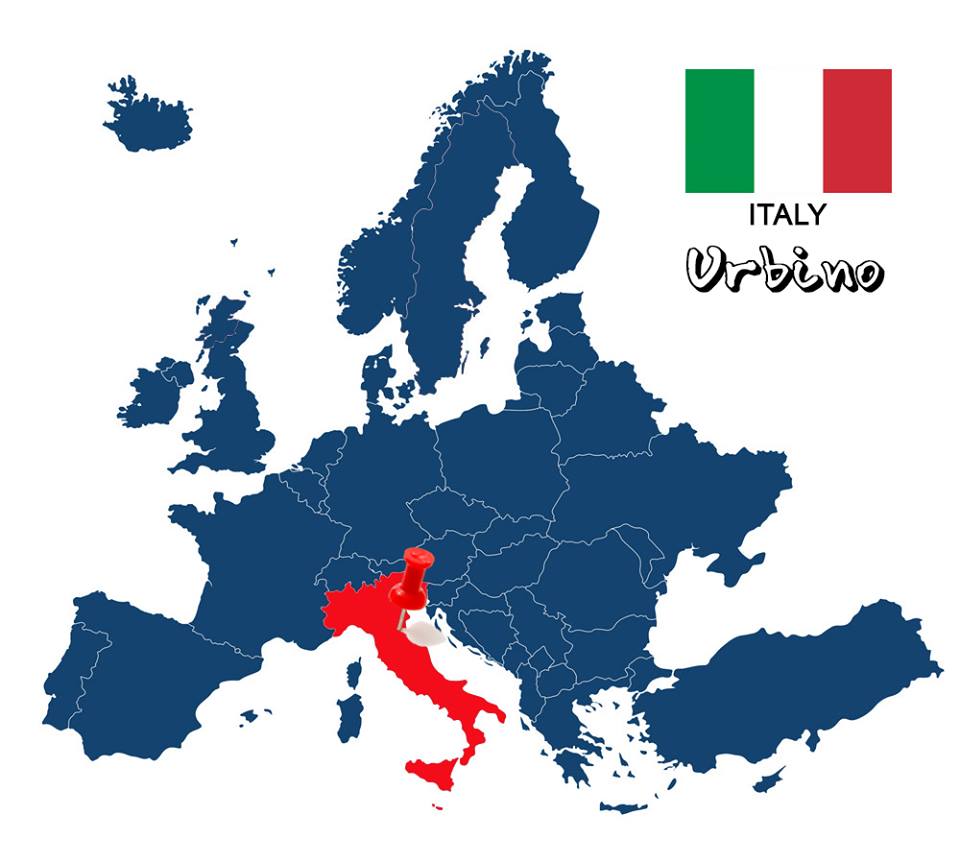
Certainly Urbino is not one of the most famous cities in Italy, and many of you may never have heard of it, but that doesn’t mean that it lacks beauty. An impressive and picturesque castle town, away from the hordes of tourists and outside of the guides, that will surely delight you!
A few words about the city
Urbino is a medieval city in central Italy and the truth is that hardly anyone will be there just for it, as it’s not one of the most tourist towns of the neighboring country. The historic centre of the birthplace of one of the three Renaissance Giants, Raphael, has been a UNESCO World Heritage Site since 1998 for the cultural flowering of Urbino during the Renaissance, especially under the authority of Federico da Montefeltro, Duke of Urbino from 1444 to 1482. Actually, it’s a castle town of 15.291 residents, mounted on a tall hillside, essentially entirely built within the walls of the palace of Urbino. It’s called the city of lunatics (la città dei matti), as it is said that all residents look alike and are related! This emerges from the legend that says, that the hated Duke Oddantonio da Montefeltro, who was repeatedly accused of his "unbridled lust", wanted for his sexual companions all the women of the city. So during his reign, all the women giving birth to own children, who grow up mating with their own brothers and sisters, creating crazy people and monsters! Of course all these are just myths, which make the history of the place a little bit "salty." For my part, I will try to present Urbino to you through my own eyes and share what I believe someone should see, visiting the city for the first time.
Palazzo Ducale
The Duke's Palace is not just the city's most important attraction, but for many it’s the city itself, as much of Urbino is built inside its walls. The construction of the palace began for the Duke Federico III da Montefeltro, around the middle of the fifteenth century, in place of the already existing palace, and despite the difficulties of erection due to the subsoil, is considered a landmark for the passage of the military defense architecture (middle Ages) to the architecture of beauty (Renaissance). This spectacular piece of art is considered a prime example of the whole Italian Renaissance and as I mentioned above is now a UNESCO World Heritage Site. Inside it also houses the National Gallery of Marche (Galleria Nazionale delle Marche), where the collections come largely from works collected in the nineteenth century from churches and monasteries in the Marche region. Of course, rare works from the collection of the Duke himself, Raphael and Federico Barocci from the 16th century are exhibited, while on the top floor there is an interesting pottery exhibition. The general admission costs 8€, but there is a discount for the European Students-Students of the European Union from 18 to 25 in 5e, and and is free every Sunday and for all children under 18.
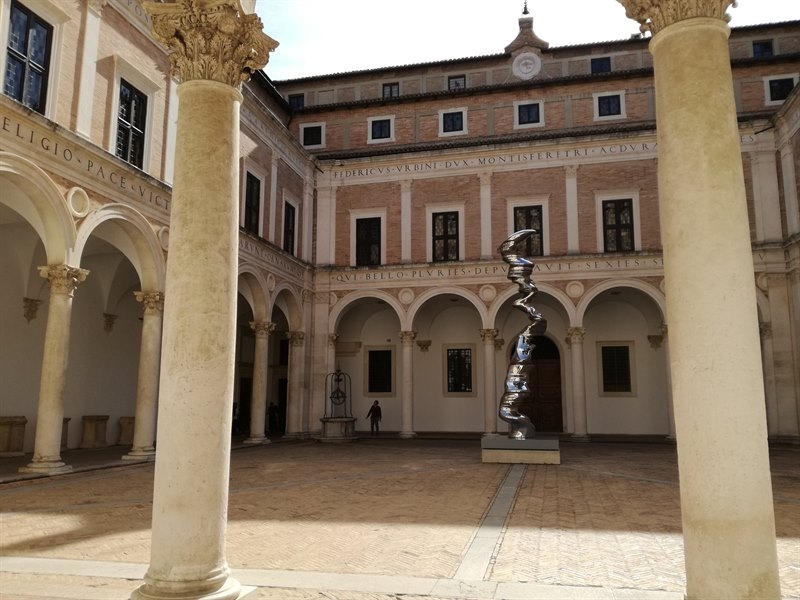
Duomo di Urbino
Urbino's Cathedral is a very beautiful building in the historic city center with a tumultuous past. The original church was established in 1021 and was located outside the city walls, but a few centuries later (1604), the need for further protection has led the Duke Federico da Montefeltro in the erection of a new temple, larger and more impressive on the plans of the former, by the personal architect Francesco di Giorgio Martini. However, this unique work of the Renaissance was not meant to survive, as it was completely destroyed by the two earthquakes of 1781 and 1789. The severe disasters forced the administrators to rebuild the church, assigning the work to some of the best architects of the time, and this was completed in 1804. The current view is adorned by five statues representing the Theological Virtues (Faith, Hope and Charity) in the pediment, while on both sides there are the statues of St. Augustine (left) and St. John Chrysostom (right). Finally, its sophisticated interior, designed by Valadier, is a good example of the neoclassical style, with a Latin cross, three white aisles covered by a dome and beautiful frescoes worthy of admiration.
Centro Storico
In the historic centre of Urbino, of course, there is not only the Duke's Palace and the cathedral. This particular part of the city, which in my opinion is the most beautiful, has spectacular squares, medieval stone houses, beautiful paved streets and other buildings worthy of attention. The first square you'll encounter is the Freedom Square (Piazza della Republica), which is embellished with a fountain at its centre and is the student heart of the city. Continuing your route, you will reach the Renaissance Square (Piazza Rinascimento). Most of Urbino's sights can be found here. The entrance to the Duke’s palace and right next to the cathedral. In this square you will find also a huge Egyptian obelisk (Obelisco Egizio), which is one of the twelve that are scattered all over Italy. It dates from the time of Hofra or Apries (twenty-sixth dynasty, 558-568 BC) and probably comes from the temple of Isis in Campo Marzio in Rome. Just across the street is the Church of Saint Dominic (Chiesa di san Domenico), a beautiful 14th-century building used today by the Department of Pastoral and Social Theology of the University. Also, in this part of the city, we find the Sanzio Theater (Teatro Sanzio), which is considered the main theater of the city and the entire province of Pesaro. Finally, the University of Urbino (Università di Urbino, Carlo Bo) is located in the historic centre. The university was founded as an academic institution in 1506, but developed rapidly with the contribution of Senator Carlo Bo, hence his name, and has become state-owned only since 2012. It has six departments and two institutes, about 14,000 students, many from abroad, about 800 teachers and 400 administrative staff. The university has no central campus, while it occupies numerous buildings throughout the city and the surrounding area.
Parco della Resistenza
If you are wondering what is the ideal place to admire the city from above, the answer is simple and is none other than the Parco della Resistenza (the Park of Resistance). Going uphill on Via Raffaello you will see at the end, the hill where this beautiful park is located, offering privileged panoramic views across the city, perfect for relaxing and picnicking on sunny days. The Fortress of Urbino, Fortezza di Albornoz, is also housed there. It owes its name to Cardinal Albornoz and dates back to the second half of the fourteenth century. During the centuries has suffered several destructions and reconstructions, but the current structure, made of bricks, comes from the Napoleonic era (1799), where it was rebuilt for military purposes. Inside it houses the Bella Gerit Museum, which houses exhibits of archaeological finds at the site, as well as exhibits of war equipment used between 1300 and 1500.
Oratorio di San Giovanni Battista
The Chapel of St. John the Baptist is a hidden treasure under the Parco della Resistenza, which according to city records dates back to 1365. The exterior of the temple was also affected by the major earthquakes, but received significant restoration in neo-Gothic style in the early twentieth century, designed by Diomede Catalucci. But what will leave you speechless is its interior, full of dozens of beautiful circular frescoes. They depict the Crucifixion and the baptism of Christ, the Virgin Mary, the infant, and the stories of St. John's life, and finally below the Holy Bank there are the relics of St. Peter Spagnoli, who spent the last years of his life in the service of the church, and who died there in 1415.
Casa Natale di Raffaello
As I mentioned above, Urbino is the birthplace of one of the most important Renaissance painters, Raphael, so I could not fail to include in my reference the house in which he was born and raised. This house was built in the fourteenth century and there Raphael took the first art stimuli from his father Santi, who was also a professional painter and poet. In 1637 the building, after several stages, acquisitions and divisions, was purchased and renovated by Muzio Oddi, a local architect, and about two hundred years later, in 1869, the Rafael Academy (l'Accademia di Raffaello) was inaugurated, which was founded by Pompeo Gherardi and has been a supporter of many art initiatives and studies. Today it operates as a museum (the ticket costs 3.50€), which is decorated with old-fashioned furniture in an attempt to reach the time. Also are on display some original works of Raphael from when he was in school, replicas of some of his most important creations, but also paintings of his father. Finally, on the upper floor there is a library of rare manuscripts and publications.
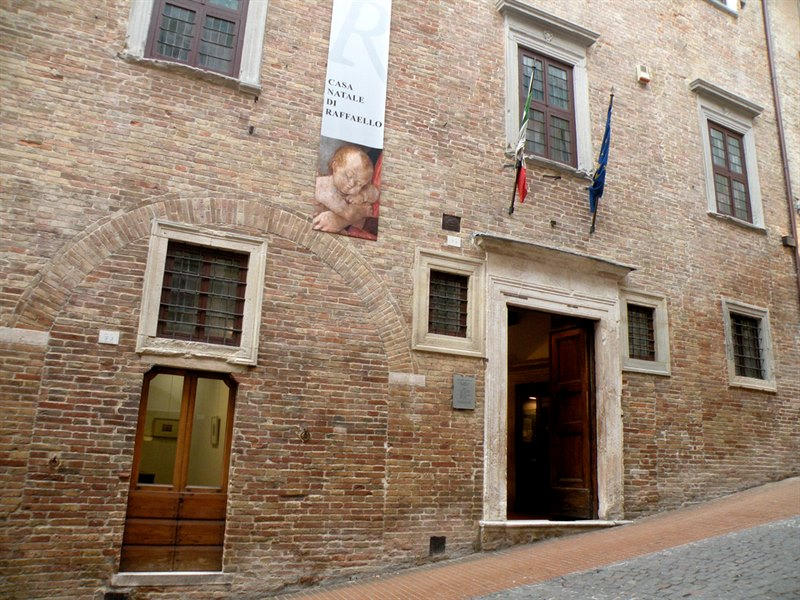
How to go
Of course there is no airport in Urbino, so you have to travel to a neighboring big city first and end up in Urbino. The most economical and quick choice from Thessaloniki is via Bologna. So the cheapest way to travel to Bologna, as we saw in a previous article, is with a Ryanair round-trip flight, which costs 75€. From there you have to take a train to Pesaro, about 18€ round-trip economy class, and finally you have to use a bus (4€) to reach your final destination.
Where to stay
Urbino is a small town and as it makes sense there are not many accommodation options. The best, in comparison to the rest, is in my opinion the Albergo Italia, located in the center of town, just opposite the Palazzo Ducale. The rooms are spacious, clean and overlook the historic city center.
How to move
In Urbino you will not need any means of transport once you reach the city center, as most attractions are close to each other and distances are walking. However, in case you need a means of transport, the city has buses with frequent services, serving the whole town.
What to eat
Since you are in Italy, you should not forget to taste all the traditional flavors of the neighboring country, namely pasta, pizzas and ice creams. One dish found in central Italy and specialties in Urbino is the agliolini al pecorino di fossa, pasta with sheep's cheese. Finally, it is imperative to taste the wines, since this particular part of the country is famous for them.
Useful information

In Italy we travel with a passport or a new type of Police Identity Card, where the information is written in Latin characters.
In Urbino the language used is, of course, Italian, while most residents do not speak English. So if you don't speak Italian, you should use body language if you want to understand each other.
The currency of the country is the euro.
Urbino is an hour behind Greece (GMT +2).
In Urbino there is no Greek embassy or Consulate, so if you need anything you should contact the nearest, which is located in Ancona, at Via Luigi Einaudi, 60125, and the phone is +39 071 2074567.
Urbino is located quite North, so the winters are particularly cold with snow and very low temperatures, while in summer the city empties after students leave for holidays. So an ideal visit period is either spring or autumn.
Recommended excursions → Pesaro, Florence, San Marino

If this article seemed interesting or contributed to your quality information, then you can like my facebook page: o_thessalonikios or follow me on instagram!
Mouzakidis Pantelis





